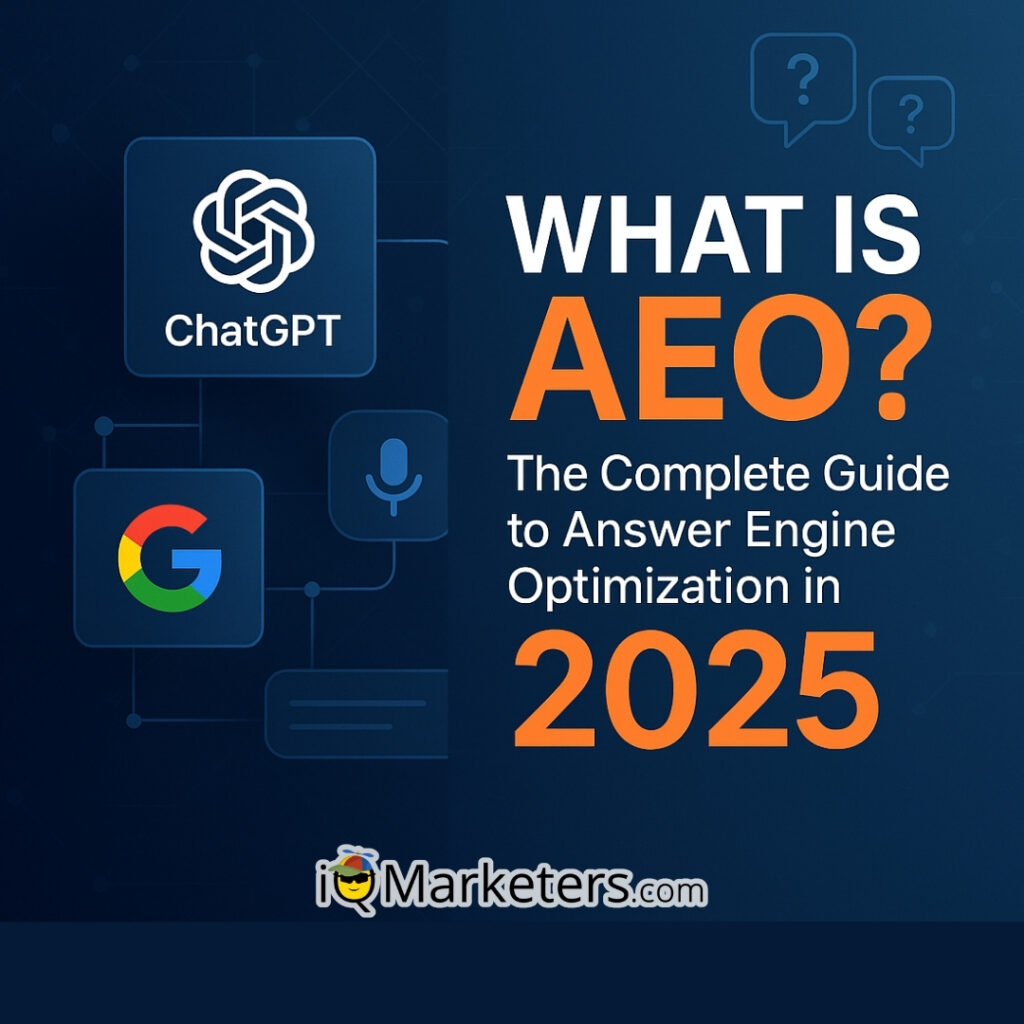If You’re Not Optimizing for Ai, You’re Invisible
By Andrew Anderson | iQ Marketers
The New Gatekeepers of the Internet
A quiet revolution is underway—and if you’re not watching closely, you’re going to miss it. AI engines like ChatGPT, Google’s Search Generative Experience (SGE), Perplexity AI, Claude, Bard, and Grok (from xAI) are becoming the first stop for search. They don’t just help users find answers—they generate them.
That means the rules of visibility have changed. You’re no longer fighting for a spot on Page 1 of Google. You’re fighting to be the source AI cites. If you’re not optimizing your content for AI engines, you’re becoming invisible—fast.
What Is AEO (AI Engine Optimization)?
AEO stands for AI Engine Optimization—the next evolution of SEO. It’s about creating content that’s not just ranked by search engines, but understood, summarized, and cited by AI systems.
In short:
SEO gets you found by Google.
AEO gets you quoted by AI.
Traditional SEO focuses on keywords, backlinks, and meta tags. AEO focuses on clear intent, structured answers, factual accuracy, and contextual authority.
Here’s an example:
Ask ChatGPT, “What’s the best CRM for small business?” It won’t show you a list of links. It’ll generate an answer, pulling from the content it’s been trained on. If your brand isn’t part of that answer—it’s invisible.
Why Traditional SEO Alone Isn’t Enough Anymore
Search engines evolved. They no longer just link—they think.
AI engines skip the blue links entirely. Instead of pointing to a page, they:
- Synthesize thousands of pages
- Choose the most authoritative, clear, and structured content
- Present a summarized response in seconds
That means even a #1 Google ranking doesn’t guarantee visibility in AI-generated answers.
Example:
A blog post ranking high on Google might never get cited by ChatGPT if it’s not structured clearly, lacks depth, or doesn’t signal expertise. Meanwhile, a smaller, less-known site with smart formatting and strong authority signals might dominate AI responses.
What AI Engines Actually Look For
AI isn’t magical—it follows patterns. The content it cites often includes:
✅ Clear Question-Based Headers
- Like: “What is AEO?” or “How does AI choose sources?”
- These match natural language queries used in AI prompts.
✅ Structured, Direct Answers
- Think 2–4 sentence answers that summarize and explain.
- No fluff, just clear value.
✅ E-E-A-T Signals
Google’s AI and others prefer content that demonstrates:
- Experience: Real-world insight or application
- Expertise: Depth and understanding of the subject
- Authoritativeness: Trusted by others (citations, backlinks)
- Trustworthiness: Accurate, unbiased, and well-sourced
✅ Conversational Formatting
AI loves content that sounds like it could be spoken in a human conversation—because that’s how people interact with AI engines.
The Business Risk of Ignoring AEO
If you’re not optimizing for AI, here’s what you’re risking:
❌ You Become Invisible in AI-Generated Answers
Even with great content, you’ll be skipped if it’s not structured for AI engines.
❌ Your Competitors Train AI Models—Not You
When your competitor’s blog is cited by ChatGPT, Bard, Grok, or Claude, it builds their authority, not yours. Every prompt trains AI to trust them, not you.
❌ You Lose Organic Traffic to AI Summaries
AI-generated summaries often answer the user’s question without them clicking a link. If you’re not the answer, you’re not part of the interaction.
❌ You Miss Out on Future Search Behavior
Voice search, wearable tech, smart assistants—all powered by AI. AEO ensures your content stays relevant in these new formats.
How to Start Optimizing for AI Engines
Good news: if you’re writing high-quality, helpful content, you’re already halfway there. Now, you just need to structure and present it for AI.
Here’s how:
1. Answer Real Questions
- Use tools like AlsoAsked, AnswerThePublic, or People Also Ask to find common queries.
- Create content with question-style headers.
2. Include Direct, Digestible Answers
- Add 2–3 sentence summaries below each header.
- Use bullet points, tables, or checklists where applicable.
3. Make Content Easy to Parse
- Use H2/H3 subheaders
- Break up text into short paragraphs
- Avoid jargon
4. Source Everything
- Link to reputable studies, data, or expert commentary.
- Cite where your information comes from—it builds trust with AI models.
5. Update Regularly
- AI engines prefer fresh, relevant content.
- Refresh stats, links, and answers regularly to maintain authority.
Be the Answer, Not the Afterthought
Search is no longer about being found. It’s about being trusted by AI.
AI Engine Optimization is not a trend—it’s a shift in how the internet works. If your content isn’t optimized for AI, you’re not just losing traffic—you’re disappearing from the conversation.
Now is the time to adapt. Audit your content. Think like an AI. And above all—be the answer.
Want help with AEO strategy or content audits? Reach out to iQ Marketers—we help brands become the source AI trusts.







